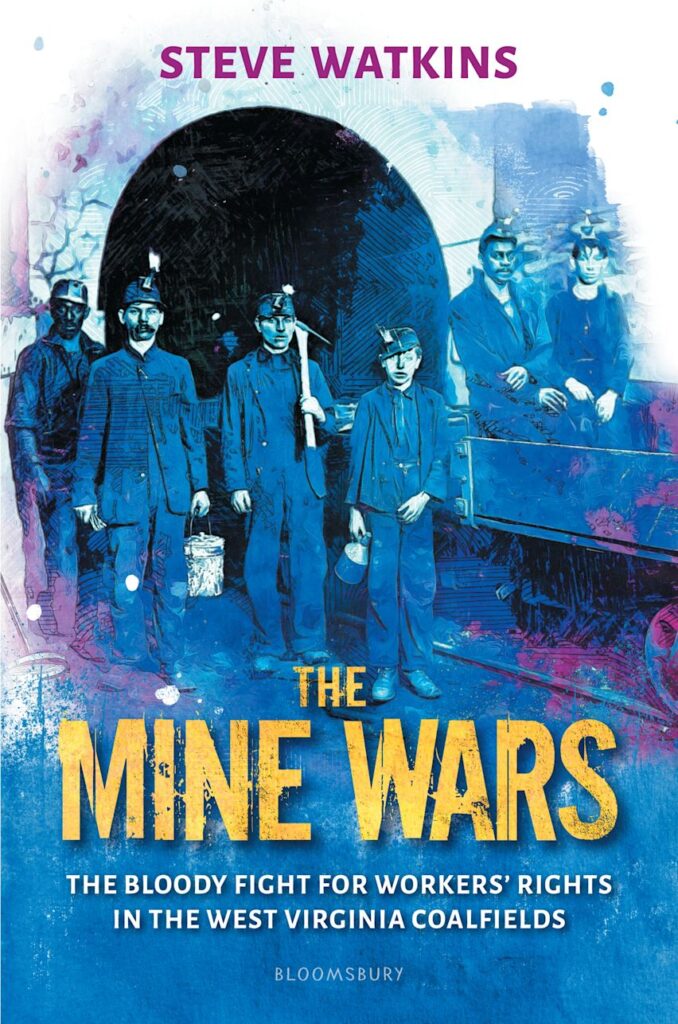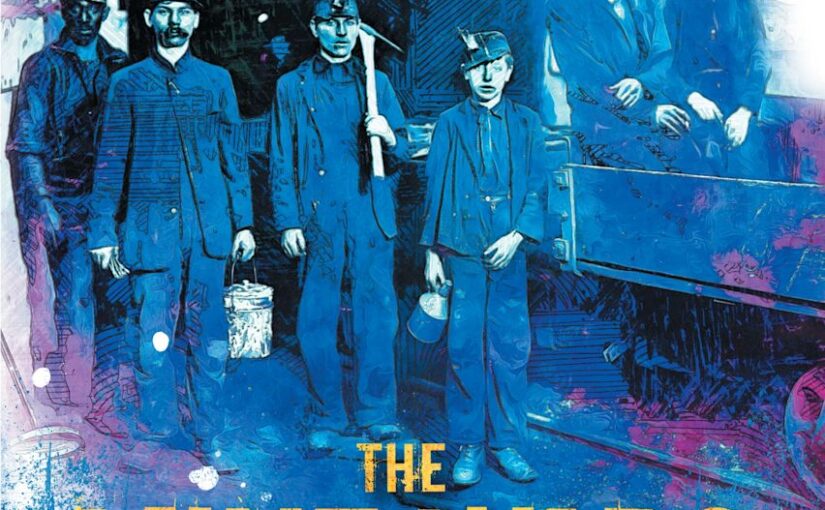Coal is something whose byproduct we know, yet the process of getting it from the ground is draped in mystery. We know the lights can be powered by coal, our rechargeable batteries too, but most Americans haven’t thought of the history of coal in the United States. Citizens of the United States might know that West Virginia is often synonymous with coal and is dangerous work. Yet the history of coal, involves low wages, brutal treatment of workers, a repressive means of payment, and unscrupulous owners. The Mine Wars: The Bloody Fight for Worker’s Rights in the West Virginia Coalfields tells this story that’s worthy of a mini-series.

As I was reading The Mine Wars I kept asking myself “Why hadn’t I heard about this before?” It seems like an alternate history because it was so fraught with tension, violence and cruelty, and was so close in proximity to the Civil War and WWI.
All of these factors, plus a rigged system that wouldn’t allow the workers to unionize, combined in a powdery keg in Matewan, West Virginia that became the largest labor uprising in the history of the United States. Some of you hear ‘labor’ and ‘union’ in a book’s description and think that this has all of the markings for a book that your friends on the left and right will be divided over. The Mine Wars isn’t a book about modern-day unions. This was more about workplace safety, companies that behaved more like the mafia than a profit-seeking business and workers that were treated more like indentured servants, than employees.
To understand how poor and unfairly the workers were treated, you need to know that they were paid for their work in script, instead of cash. Script was a parallel currency that could only be used in the mine towns. They paid rent with their script to the homes that the mining company owned. The workers bought things at the store, owned by the company with the script that they earned from working in the mines. Even while looking at the situation from the rosiest of perspectives, the employees were taxed twice and paid in a currency that was only good in a region where their employer controlled the costs.
Other mining areas in the county did not operate in the same manner. The harsh, controlling conditions were unique to this area in West Virginia and the miners there knew it. They spoke to the owners, they tried to strike and the owner brought in spies to live amongst them, paid off townspeople to change their opinion and eventually violence. It seems like hyperbole to call them hitmen or militia, but they were ex-military people who were paid to keep the miners in line and to do what they were told. They also eventually fired on people and were part of the approximately 100 people who were killed.
The Mine Wars is about the people, on both sides of the situation that played a part in it being created, negotiated, fought, and solved. The Battle of Blair Mountain, as the culmination of this chapter in U.S. history is commonly called, was not a one-day conflict. There were minor skirmishes; troops were brought in by train to mitigate its spread, major battles, espionage, duplicitous acts, traitors and big personalities who helped both sides.
This is a complex story with dozens of characters. The unknown aspect of the story is assisted in its comprehension by the fact that it’s written for middle school students. Author Steve Watkins has created the book in such a manner that it’s entertaining and informative, rather than a means to show off an impressively large vocabulary. The book could’ve been created for older readers, and that probably does exist. However, in The Mine Wars, each chapter is around eight pages long and has approximately five to six photographs or maps in each one.
It’s very palatable and isn’t designed to intimidate young readers. Getting them to read non-fiction can be difficult enough, much less a book on a conflict that they’ve never heard about. The fact that this struggle and conflict too place in the United States and they haven’t heard anything about this in their textbooks will be fascinating for some kids. It’s those STEM-minded, curious kids who will be most attracted to The Mine Wars. This is a well-written book that will make them learn more and make their big brains bigger; as opposed to trying to convince their counterparts that making a viral video isn’t a career path.
The Mine Wars: The Bloody Fight for Workers’ Rights in the West Virginia Coalfields is by Steve Watkins and is available on Bloomsbury Children’s Books.
There are affiliate links in this post.





 Facebook
Facebook Twitter
Twitter Flickr
Flickr GooglePlus
GooglePlus Youtube
Youtube